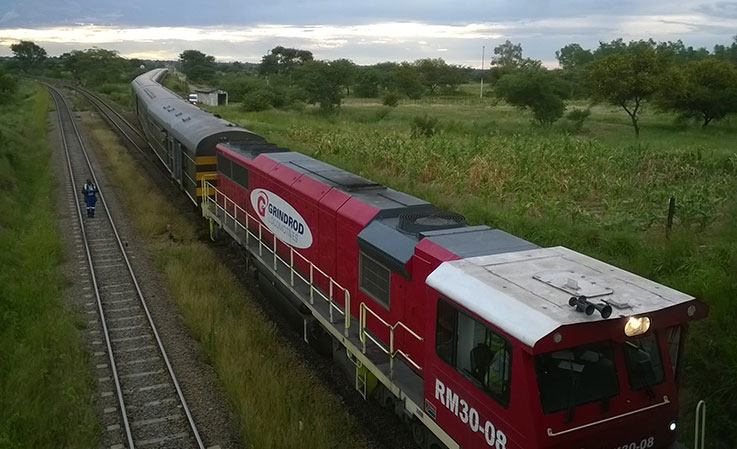Zimbabwe’s freight transportation sector is undergoing a significant transformation as the government partners with private players, including China Rail International Group and South Africa’s Grindrod, to revitalize the country’s ailing rail network.
By Rudairo Mapuranga
This initiative is set to significantly impact the mining industry. The industry has largely relied on road transport to move key minerals such as chrome, lithium, iron, and coal, placing immense strain on the nation’s roads.
The National Railways of Zimbabwe (NRZ), once a powerhouse hauling 12 million tons of cargo annually in the 1990s, now struggles to move less than three million tons due to decades of underinvestment, deteriorating locomotives, and poorly maintained rail infrastructure. This has left the bulk of Zimbabwe’s mineral output dependent on road transport, with disastrous consequences for the nation’s highways.
The Bulawayo–Victoria Falls road and the Harare–Chirundu road are prime examples of this strain. Both roads are in a poor state, as heavy trucks carrying chrome and coal have turned them into hazard zones. The rapid deterioration of these key routes has increased road maintenance costs and led to frequent accidents.
The Importance of Reviving Rail for Mining
The resurgence of Zimbabwe’s mineral sector, driven by increasing global demand for lithium and chrome, makes restoring the rail network crucial for the mining industry.
Key minerals such as chrome, iron ore, and lithium from companies like Tsingshan Holdings, Sinosteel, Sinomine, Zhejiang Huayou Cobalt, and Chengxin Lithium are currently being exported via road to Mozambique’s ports, a situation that is far from ideal for long-term sustainability.
Without an efficient rail system, Zimbabwe’s roads will continue to suffer from the heavy burden of transporting minerals, potentially hindering growth in the mining sector.
An improved rail network will not only ease pressure on roads but also provide a more cost-effective and efficient means of exporting Zimbabwe’s growing commodity volumes.
NRZ spokesperson Andrew Kunambura noted that the rail network cannot currently handle the rising demand, moving only 2.8 million tons last year against available business of over 3 million tons. Private companies like Grindrod are now stepping in, deploying locomotives and wagons to boost NRZ’s capacity.
“Last year we moved 2.8 million tons against available business of 3 million tons. So these private companies are coming in with their locomotives and wagons to augment what we have,” Kunambura said.
Grindrod, through its subsidiary Beitbridge Bulawayo Railway, has already deployed three locomotives and 150 wagons since March 2024, forming part of a larger strategy to build freight rail partnerships across Southern Africa.
The company is keen to capitalize on emerging market opportunities, with plans to expand operations to other countries, including the Democratic Republic of Congo and South Africa.
Future Opportunities for Mining Logistics
The revival of Zimbabwe’s rail network presents significant opportunities for the mining industry. With ongoing discussions between President Emmerson Mnangagwa and Chairman Bi Yanchun of China Rail International Group, there is hope for further infrastructure development.
A partnership with China Rail International could dramatically improve the rail system’s capacity, providing a sustainable solution for the country’s growing mineral exports.
As Zimbabwe positions itself as a key player in global mineral supply chains, the restoration of the rail network is essential for maintaining the momentum of its mining sector.
Improved rail capacity will enhance the efficiency of mineral exports, reduce the damage caused to roads, and support the nation’s broader economic development goals.
With private investments and international partnerships in place, Zimbabwe’s rail system is poised to once again become a vital artery for the country’s burgeoning mining industry, ensuring that minerals like chrome, coal, iron, and lithium can be transported efficiently to markets across the globe.
This transformation is not only critical for the mining sector but also for the long-term sustainability of Zimbabwe’s infrastructure and its ability to attract further investment in both mining and logistics.
.png)




